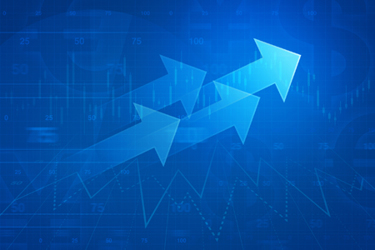Submersible Pumps Sales Soar On Back Of Digitization And New Initiatives On Wastewater Treatment
By Mohit Loshali

The global submersible pumps market size will expand 1.5X in the coming decade. Submersible pumps are emerging as the preferred pumping technology across various end-uses, including wastewater management and oil & gas manufacturing. Submersible pumps are considered ideal for applications involving highly viscous fluid that require proper elimination of vapor cavities.
Increasing wastewater treatment initiatives by large-scale industries and municipal authorities are driving the demand for submersible pumps. These pumps are easy to install and require a comparatively low initial investment, thus attracting a larger customer base.
Oil & Gas Industry — Key Value Creator
Submersible pumps are especially useful in wells having inadequate bottom-hole pressure, gas/oil ration, bubble-point, or API gravity fluids. These pumps find immense use in the oil & gas industry. Driven by artificial lifting coupled with low maintenance positions, submersible pumps are a cost-efficient alternative to vertical turbines as well as split-case and positive displacement pumps.
As the several oil wells across the world are coming off age, manufacturers are witnessing a substantial drop in the reservoir pressure. To make up for this loss of pressure, submersible pumps are useful as they push water from a submerged point inside the liquid.
Ever since the exploration of shale gas reserves in the U.S. and Canada, submersible pump manufacturers are witnessing a burgeoning growth in these countries. However, the sales of submersible pumps are directly linked to the oil & gas industry. Fluctuating barrel prices and disrupted investments translate into dampening growth of the submersible pump market. A few significant factors that will influence the growth of submersible pump application in the oil & gas industry are:
- Weakening economic conditions in European countries.
- Intense trade disputes between the U.S. and China.
- The delayed outcome of the Brexit.
- Rising tension between state and non-state actors in the Middle East.
Further, prevalence of sustainable automotive such as electric cars means that significant oil & gas producers will look to divest from the conventional approaches. This trend could decrease the demand for submersible pumps in the coming years. However, there are a few remunerative trends that can help market players devise a successful plan for the coming decade, some of which are:
- Rising shale gas production in the U.S. will continue to propel the demand for submersible pumps.
- Government investments in shale gas production in Canada is another beneficial factor that will spur demand in the coming years.
- Mergers & acquisitions in the U.S. oil & gas industry will further strengthen market growth as the newly formed entities look to capitalize on acquired rigs.
Water Treatment Applications To Attract Significant Investments
Submersible pumps are an industry-standard in water treatment and sewage treatment in developed countries. The same trend is echoing in developing countries in Asia Pacific (APAC) and Middle East. Governments are scaling up their investments in sustainable sewage infrastructure and wastewater treatment.
The efficiency of submersible pumps in wastewater or sewage, solid or fibrous sludge containing liquids, and stormwater treatment plants are enabling their broader adoption. High performance and output even under continuous operating conditions are pushing the sales of submersible pumps.
Increasing industrialization in developing countries is fueling the demand for better water treatment methods, and submersible pumps are an integral part of such systems. Hence, manufacturers will find lucrative opportunities in water treatment applications in the coming decade.
COVID-19 Pandemic To Expose Market To Uncertainties
The impact of the coronavirus (COVID-19) pandemic is omnipresent across several industries, globally. Both public and private sector investments are either on-hold or on the verge of cancellation. This holds true for oil & gas and water treatment infrastructure as well. As governments around the world look to devise a sustainable path for economic recovery, investments are taking a back seat. This means that the near-term opportunities for submersible pump manufacturers during Q1 of 2020 are now grim.
The downfall of oil & gas industry as a result of rising OPEC tensions and unprecedented fall of barrel prices is raising serious questions about the future of demand from the end-use industry. The detrimental impact of COVID-19 in countries such as the U.S., the UK, Italy, Brazil, and China is adversely affecting the sales of submersible pumps. While leading manufacturers are surviving on cash reserves, small & medium enterprises (SME) are on the brink of bankruptcy.
The submersible pumps market will continue to suffer even after the COVID-19 pandemic subsides. Changes in consumer behavior, such as maintaining social distancing and minimizing air traveling, have an indirect effect on submersible pumps market. Reduced air traffic is resulting in reduced consumption of fuel and electricity.
Since fuel production and electricity generation are critical to the oil & gas industry, the production output will slump. This will compel buyers of the oil & gas to reconsider their purchase orders which will most likely postpone the number of submersible pumps they need. Hence, manufacturers of submersible pumps must map out recovery strategies by targeting sustainable applications such as water, wastewater, and sewage treatment initiatives post-COVID-19 lesson.
Manufacturers To Tap White Spaces In APEJ
North America and Western Europe collectively account for a leading share of the global submersible pumps market. However, market in Asia Pacific ex-Japan (APEJ) is experiencing staggering growth, owing to rising investments in water and wastewater treatment plants, particularly in South and East Asia. The demand will reach its peak between 2023 and 2024 in these regions.
The need for effective pump solutions is witnessing a quantum leap. Market players are focusing on forging customer relationships by capacity expansions in APEJ. Further, bore-well and open-well submersible pumps will see a substantial increase in demand over the coming decade.
Advanced Technologies To Shape Future Of Submersible Pump Market
Major players in the market are integrating industry 4.0 technologies such as the Internet of Things (IoT), artificial intelligence (AI), and machine learning (ML) into submersible pumps. These smart submersible pumps come with innovative features, including predictive maintenance and real-time data capturing, enabling them to deliver crucial insights such as temperature and water and pressure levels in installed systems.
Smart submersible pumps are the future of the market. Several end-use industries are benefitting from these features, especially advanced predictive analytics. Demand for smart submersible pumps will further be fuelled by increasing adoption of new-age pumping solutions in water treatment, well-extraction, and irrigation infrastructure in developing countries. Despite the economic downturn due to the COVID-19 pandemic, the submersible pump market will make a rapid recovery as governments, worldwide, lift trade restrictions.
 Mohit Loshali, a Senior Research Consultant for Fact.MR, has more than six years' experience in market research and consulting industry and has been closely working on automotive, industrial automation, and equipment industry verticals. So far, he has worked on 200+ research assignments, in addition to providing his expertise to 30+ reputed organizations. Mohit is currently the lead consultant for product positioning, competitive analysis, new market/segment exploration, and sourcing strategies at Fact.MR. Insights presented in the articles are based on the findings of Fact.MR’s ongoing extensive research on Submersible Pump Market.
Mohit Loshali, a Senior Research Consultant for Fact.MR, has more than six years' experience in market research and consulting industry and has been closely working on automotive, industrial automation, and equipment industry verticals. So far, he has worked on 200+ research assignments, in addition to providing his expertise to 30+ reputed organizations. Mohit is currently the lead consultant for product positioning, competitive analysis, new market/segment exploration, and sourcing strategies at Fact.MR. Insights presented in the articles are based on the findings of Fact.MR’s ongoing extensive research on Submersible Pump Market.
